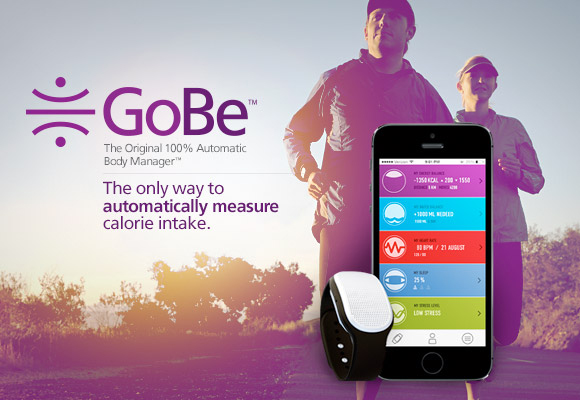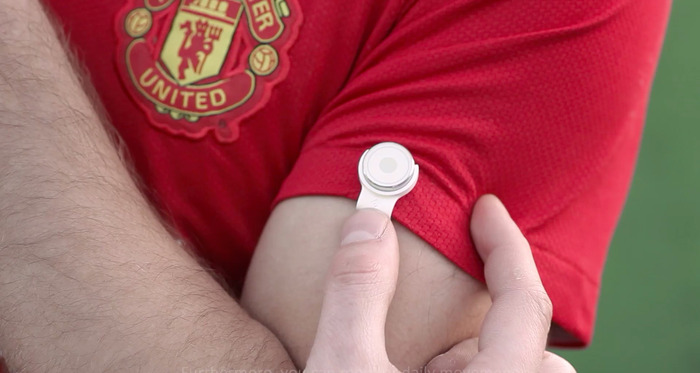06 Apr 2014
By Belle
A fitness tracker that knows how many calories you consume and the death of wearables: Quantified Self weekly links
Exist news: This week we closed our backers campaign (thank you to everyone who supported us! You guys are the best.) and sent our invites to our backers to create Exist accounts. We're polishing the product based on their feedback and getting ready to publicly release our beta—hopefully in the next couple of weeks.
We also chatted to The Saturday Paper about Quantified Self for a story that was published this week.
1. The death of wearables
There's been a lot of people lately pointing to the supposed "death" of wearables, as users run into number fatigue or simple lack the motivation to wear their devices anymore. We shared our thoughts on the topic in this article:
"The early adopters are normally disappointed in tech, and that’s what we’re seeing now. But overall, we believe there is a big future in the idea of using data to gain insights into people’s lifestyle."
2. Bunkum crowdfunding campaigns
I was going to add a link to the overfunded Indiegogo campaign for the GoBe tracker, which claims to automatically measure how many calories you've consumed:
It automatically measures calories consumed through your skin. Only GoBe uses Healbe FLOW™ Technology to combine a unique algorithm with measurements from the body manager's pressure, accelerometer, and impedance sensors to show you calories consumed; metabolic rate and calories burned during any activity; hydration; sleep; and stress.

When Josh read through my draft he was dubious about whether the device really does what it claims. After a little more digging around, it seems like his wariness was justified. PandoDaily has repeatedly reported on the dubiousness of the campaign's claims and called for Indiegogo to shut it down, without success.
This week a new article on PandoDaily pointed out that a similar scam has happened in the past on Indiegogo, and the platform needs to do something about finding ways to protect backers against fraudulent claims in the future:
The only difference is that Healbe’s campaign is still underway, and there’s still a chance for Indiegogo — or one of their board members or investors, or anyone able to influence the company’s management — to do the right thing. Unfortunately, the more we learn about previous scams on the Indiegogo platform (and there are certainly more to emerge as we keep digging), the less likely it seems that they will.
So be wary next time you back a product that seems too good to be true.
3. Getting wearables right
A look at what wearable tech needs to improve as it pushes forward into a more mainstream market.
For input devices, it is vital to have two hardware elements efficiently working together: extremely low-power general processing (CPU) and connectivity (e.g. Wi-Fi/Bluetooth). These technologies need to be backed up by a scalable and flexible software ecosystem that includes a cloud infrastructure ready to store, process and interpret the flow of data coming from these smart sensors.
4. Fitbit and the Dark Ages of hardware
Fitbit hasn't always been the giant of fitness wearables that they are today:
[W]hen [Fitbit founder James] Park and fellow founder Eric Friedman had the idea for a wireless-enabled wearable device that tracks a user’s daily activity, energy output and sleep quality, the only comparable product was a $25 pedometer, they had no manufacturing skill set and knowledge about how to make hardware was closely guarded.
In fact, the progress of the company's first product was slower than they expected:
"I actually thought we could get a product to market with $400,000" Park says. The following year Fitbit raised a larger round of over $1 million. Sixteen months later they still had nothing but a fleshed out idea.
This PandoDaily story talks about the arduous process of getting the first Fitbit to market and growing the company. It's pretty interesting, even if you're not a Fitbit user.
5. How well do fitness trackers monitor heart rate?
This LiveScience article explores how fitness trackers measure heart rate and how accurate they are:
"The individual needs to be smarter than just the device … to be able to see when those numbers may not be correct," Brawner said.
He recommends checking the pulse on the underside of the wrist, counting the beats for about 15 seconds, and multiplying the number by four. Then, see how this number compares to the reading the device gives
6. The trouble with fitness gadgets
Casey Johnston argues that fitness trackers "cannot effect true, lasting change any more than a new diet or exercise can." The problem, Johnston says, is that fitness trackers rely on using extrinsic motivation, which has to "keep coming and get better every day" to be effective.
But the problem is that extrinsic rewards can undermine intrinsic ones, and it's literally impossible to keep the extrinsic rewards of fitness up indefinitely.
7. Goccia, the world's smallest tracker

The Goccia tracker looks very similar to the Misfit Shine, only smaller and with a different syncing method:
Using an advanced LED light sync technology, just place Goccia on the front camera of the iPhone or iPad, and with a quick tap, information will be automatically uploaded.

More:
- BSX Insight: a sensor for athletes that pairs with your smartwatch
- ICEdot: saves your health info for quick access in an emergency
- Bloodnote: Keep notes on your blood pressure [iPhone]
- Metromile: A "Fitbit for your car" that tracks your driving stats and your engine's health
- Samsung Gear 2: New edition of Samsung's smartwatch